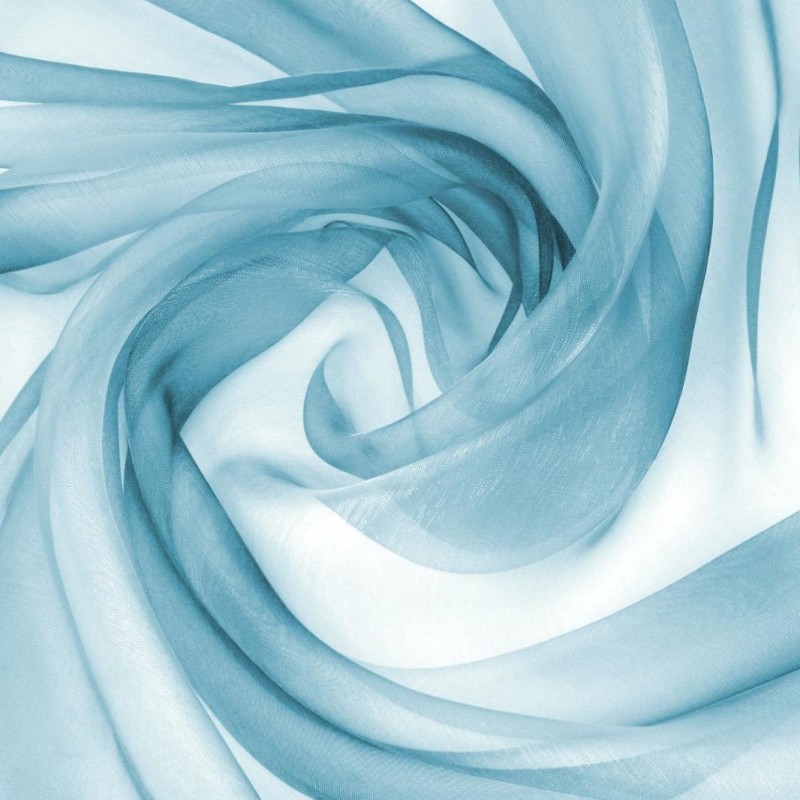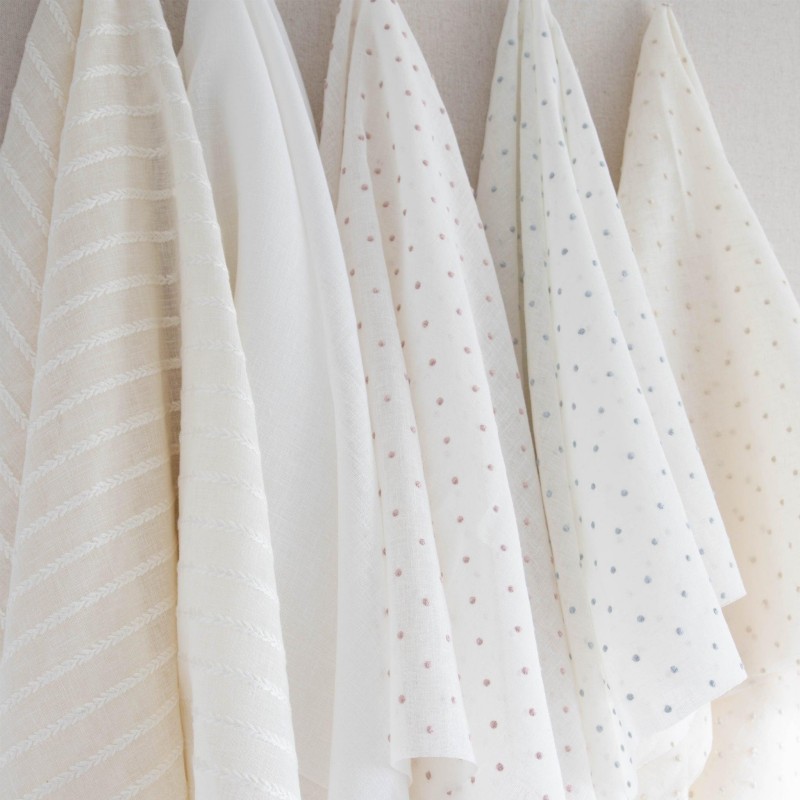Sheer fabrics play a significant role in the world of fashion, characterized by their lightweight and translucent qualities. Designers and fashion enthusiasts favor these fabrics due to their ability to elegantly drape the body, adding sophistication and allure to any outfit. The unique properties of sheer materials not only provide flattering silhouettes but also create dimension and texture in clothing. From ethereal blouses to flowing skirts, sheer fabrics offer endless design possibilities. Moreover, understanding the types of sheer materials, their benefits, and how to style them effectively can elevate your wardrobe significantly. In this comprehensive article, we will explore various types of sheer fabrics, their versatility across fashion and design, styling tips for different occasions, and care instructions for maintaining their beauty. By the end, you will appreciate how sheer fabrics can enhance your personal style.

The Allure of Sheer Fabrics: A Brief Introduction
Sheer fabrics define themselves by their transparency and lightweight characteristics, making them distinct from heavier materials. Designers and consumers alike appreciate their ability to create a sense of elegance while subtly revealing skin. Sheer materials add sophistication and glamour to various garments, making them an essential choice in modern fashion.
Versatile Applications
Fashion enthusiasts often incorporate sheer fabrics into many clothing items, including dresses, blouses, skirts, and accessories. These versatile materials allow for creativity in design, providing options for layering and combining different textures to achieve stylish looks.
Cultural Significance
Throughout history, fabrics have held cultural significance, often symbolizing femininity and sensuality. Many cultures have used these fabrics in traditional attire to create flowing garments that enhance the wearer’s silhouette. This cultural relevance has only strengthened their place in contemporary fashion.
Evolving Trends
The use of fabrics continually evolves, with designers frequently experimenting with innovative cuts and styling. As trends change, fabrics maintain their timeless quality, offering a refreshing yet classic touch to various styles.
Types of Sheer Fabrics
A wide variety of fabrics are available in the market, each offering unique characteristics and aesthetics. Let’s explore some of the most popular types:
Chiffon
Chiffon ranks among the most commonly used fabrics in fashion. Made from silk or polyester, chiffon feels lightweight and slightly crinkled, creating a soft drape. Designers know chiffon for its delicate appearance, and they often use it in evening wear, blouses, and layering pieces. Its airy quality makes it perfect for summer clothing.
Organza
Organza features a lightweight, crisp texture often made from silk or nylon. Unlike chiffon, organza has more structure and rigidity, allowing it to hold its shape beautifully. This quality makes designers favor organza for formal gowns, evening dresses, and special occasion wear. Additionally, organza is frequently layered to add depth to designs.
Tulle
Tulle presents itself as a fine, netted fabric typically used in formal wear, particularly for wedding dresses and skirts. It has a stiffer texture and significantly adds volume to an outfit. Designers offer tulle in various colors, and it’s easy to layer for stunning effects.
Georgette
Georgette serves as another lightweight fabric similar to chiffon, though it carries a slightly heavier weight and a more matte finish. Known for its flowing drape, designers often use georgette in blouses, dresses, and skirts. Furthermore, georgette makes an excellent overlay for beautiful layered effects.
Lace
Although many consider lace a decorative fabric, various styles possess sheer qualities that enhance their appeal. Lace features intricate patterns and can add elegance and sophistication to any outfit. Designers frequently use sheer lace detailing in dresses, tops, and bridal wear.
Voile
Voile, a lightweight cotton fabric, boasts a soft texture and slightly sheer appearance. This fabric offers breathability, making it popular for summer clothing, curtains, and bedding. Designers appreciate voile for its ability to be layered and styled for different occasions.
Benefits of Sheer Fabrics
Integrating sheer fabrics into your wardrobe offers numerous advantages, allowing you to explore a range of styling options. Here are some key benefits of these enchanting materials:

Breathability and Comfort
One of the most significant benefits of sheer fabrics is their breathability. Lightweight and airy, sheer materials allow for airflow, keeping you comfortable, especially in warm weather. This quality makes sheer fabrics ideal for summer clothing and layering pieces.
Versatile Styling Options
Sheer fabrics provide endless possibilities for styling. You can layer them over solid pieces for a delicate touch or wear them as statement items on their own. From flowing skirts to structured tops, sheer fabrics can elevate any ensemble, making them perfect for casual and formal occasions alike.
Enhancing Textures and Layers
When layered, sheer fabrics add texture and depth to outfits, which creates visual interest. Mixing sheer materials with other fabrics not only enhances the overall design but can also make simple clothing arrangements look chic and sophisticated.
Flattering Silhouettes
The lightweight nature of sheer fabrics allows them to drape beautifully over curves, creating flattering silhouettes. By incorporating sheer elements, you can soften rigid lines and accentuate specific areas of the body, achieving a balanced and elegant look.
Timeless Elegance
Sheer fabrics have remained a staple in fashion for decades, embodying a timeless appeal. Their versatility ensures they find their place in contemporary fashion, making them a worthwhile investment for any wardrobe.
Styling Tips for Sheer Fabrics
Using fabrics effectively can elevate your fashion game. Here are some valuable tips for styling sheer materials to achieve stunning looks:
Layering Techniques
Layering fabrics offers a great way to create a balanced outfit. Pair a sheer blouse with a solid camisole or tank top underneath to maintain modesty while highlighting the beautiful transparent quality. Similarly, layering a sheer cardigan over a fitted dress creates a soft and fashionable look.
Combining Textures
Don’t shy away from mixing sheer fabrics with different textures. For instance, pairing a sheer chiffon skirt with a chunky knit sweater creates a striking contrast that balances femininity with casual comfort. Feel free to combine sheer materials with denim or leather for an edgier vibe.
Accessorizing Wisely
When styling outfits with fabrics, accessories play a crucial role. Opt for subtle accessories that complement rather than overpower the delicate look of sheer materials. Delicate necklaces, minimalistic earrings, or a simple clutch can enhance your overall appearance without detracting from the sheer element.
Choosing the Right Undergarments
To ensure the best look while wearing fabrics, consider your choice of undergarments. When wearing sheer tops or dresses, selecting appropriate undergarments that offer coverage and support without being visible is essential. Nude-toned undergarments usually work well for sheer materials, allowing for a seamless appearance.
Dressing for the Occasion
Sheer fabrics fit various occasions, from casual outings to formal events. For casual settings, opt for sheer blouses paired with jeans or shorts. For formal affairs, consider wearing an elegant sheer gown or skirt. Understanding the context is key to achieving a stylish and sophisticated outfit.
Caring for Sheer Fabrics
Taking proper care of sheer fabrics helps ensure they retain their beauty and longevity. Here are some essential care tips to follow:
Read the Care Labels
Always check the care labels on your sheer garments for specific washing instructions. Different fabrics may require various care methods, whether it involves hand-washing, machine-washing, or dry cleaning.
Gentle Washing
When washing sheer fabrics, consider using a gentle cycle with cold water. This approach helps maintain the integrity of the fibers and prevents damage. If the item is particularly delicate, hand-washing is often the safest option.
Air Drying
Avoid using a dryer for sheer fabrics, as heat can cause shrinkage and damage. Instead, air dry these delicate pieces by hanging them up or laying them flat on a clean towel.
Avoiding Harsh Chemicals
When washing sheer fabrics, skip the harsh detergents and opt for mild laundry soap instead. This practice helps prevent discoloration and bleeding of colors while keeping the material soft.
Storing Carefully
When not in use, hang your sheer garments to prevent wrinkles. Ensure they are kept in a cool, dry space away from direct sunlight to avoid fading. If you choose to fold them, be careful to avoid creases that might become permanent.

Conclusion
In summary, sheer fabrics represent a captivating element in the world of fashion, embodying elegance, versatility, and timeless appeal. From their rich history and varying types to their role in contemporary wardrobes, sheer fabrics allow for creativity and refinement in styling. You can embrace their practical benefits—ranging from breathability and comfort to layering and stunning silhouettes—by incorporating sheer fabrics into your wardrobe.
With proper care and styling techniques, sheer fabrics can remain a staple in your collection for years to come. As you explore new outfit combinations and styles, remember the potential sheer fabrics hold to transform ordinary looks into extraordinary ones. The next time you consider enhancing your attire, think of the enchanting possibilities that sheer fabrics bring.

